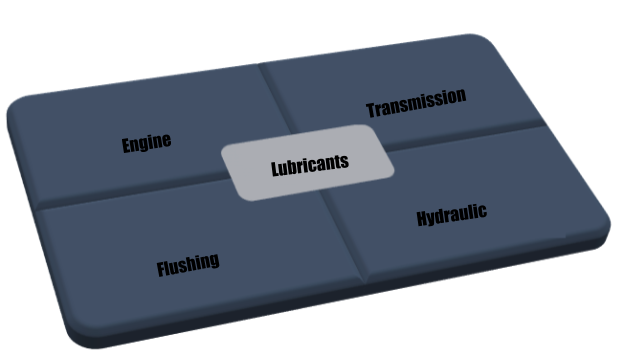Automobile oil for the engine is an essential product that provides proper functioning of the system. It is used for lubrication, cooling, friction and corrosion reduction, transmission of pressure to the components, withdrawal of combustion materials. Every driver even a newbie should know what to consider when replacing lubricants, how to choose oils properly and what are the types of oils.
Types of lubricants
According to the purpose lubricants are as follows:
- engine lubricants — for internal combustion engines;
- transmission lubricants — for manual transmission;
- flushing lubricants — designed for washing the engine from waste oil;
- hydraulic lubricants — designed for the mechanisms that operate at high pressure.

Oil formula as a key classification factor
All types of oil have a specific base, i.e. a key component to create oil. The base can be mineral, synthetic or half-synthetic.
If oil is made on the base of a mineral component, it is made on the base of residual refined product. Oil is divided into fractions by distillation and then mineral oil is made. The latter is pretty thick and viscous and requires frequent replacement. Mineral oil has several restrictions in operating mode of internal combustion engines. At engine start, operation, shutdown, temperature extremes oil changes its viscosity which affects the engine efficiency and prompts engine wear. If you use additives aside from mineral oil, this does not contribute to the efficiency.
Synthetic oils have a lot of advantages:

However, synthetic oil is expensive in comparison of cheap mineral oils. Thus, the golden mean in price are semi-synthetic oils. The latter are made by blending mineral and synthetic base in the 50:50 up to 70:30 ratio.
Thus, according to classification of oil base car oils are divided into three categories:

Aside from the base, oil contains various additional components known as additives.
Chemical compounds of additives affect viscosity, form a protective layer that reduces parts wear due to friction and corrosion. The current engine oil requirements have led to various lubricants.
Since viscosity depends primarily on the temperature it has become necessary to produce winter and summer oil. In hot climate, oil decreases viscosity and becomes liquid. As a result, engine components are badly oiled and oil runs through the gaskets. Low pressure leads to the situation when a starter does not whirr, start the engine. Summer oil is made on mineral and synthetic base.

When the temperature is low, viscosity increases. In winter, oil requires liquefying additives. Winter oil usually has synthetic base.
To spare the trouble of replacing the oil each season, there is an all-season oil for the drivers.
Oil for petrol and diesel engines
Oils are divided into those for use in internal combustion engines of petrol and diesel type. If we talk about a petrol engine, one should consider a base number. This is a value that shows neutralization level of oxide negative effects since fuel burns down inside the engine due to chemical oxidation process. This results in sludge flakes which sink on metal walls. Then they provoke corrosion, prevent proper piston sliding. Alkalies are great at neutralizing acids. Adding alkaline additives prevents the exhaust products from sinking. They are always in suspension.
The longer you use oil, the lower is the base number.
Things to consider when choosing automotive oil
First of all, take into account the engine type. Never fill the car with petrol engine with the oil designed for diesel engine and vice versa. Mismatched oil won’t form a protective layer on motor elements of necessary thickness. Thus, it leads to dry friction of drive parts.
Then consider whether the engine old or new, i.e. mileage matters here. If this is an old engine you are using, and the mileage is high, you’d better choose mineral oil since it is more viscous. Otherwise, use semi-synthetic oil.
Furthermore, consider operating conditions. If the climate is mild, choose oil with grater viscosity.

However, we always recommend you to stick to the standard.
If you still have no International Driving Permit, don’t waste the chance to apply for it here on our website! Drive your way across the globe confidently!

Published April 22, 2019 • 4m to read






